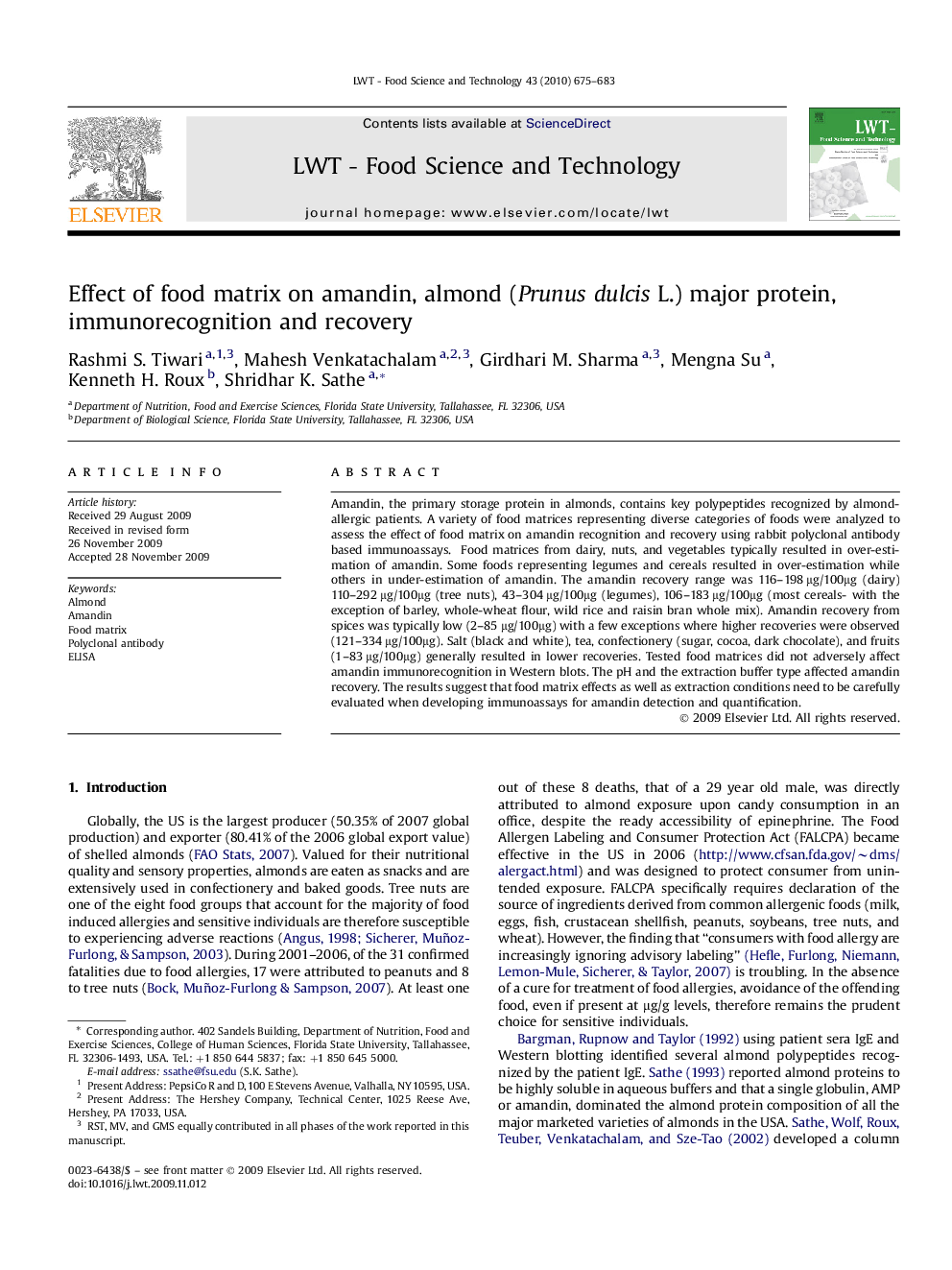| Article ID | Journal | Published Year | Pages | File Type |
|---|---|---|---|---|
| 4564491 | LWT - Food Science and Technology | 2010 | 9 Pages |
Amandin, the primary storage protein in almonds, contains key polypeptides recognized by almond-allergic patients. A variety of food matrices representing diverse categories of foods were analyzed to assess the effect of food matrix on amandin recognition and recovery using rabbit polyclonal antibody based immunoassays. Food matrices from dairy, nuts, and vegetables typically resulted in over-estimation of amandin. Some foods representing legumes and cereals resulted in over-estimation while others in under-estimation of amandin. The amandin recovery range was 116–198 μg/100μg (dairy) 110–292 μg/100μg (tree nuts), 43–304 μg/100μg (legumes), 106–183 μg/100μg (most cereals- with the exception of barley, whole-wheat flour, wild rice and raisin bran whole mix). Amandin recovery from spices was typically low (2–85 μg/100μg) with a few exceptions where higher recoveries were observed (121–334 μg/100μg). Salt (black and white), tea, confectionery (sugar, cocoa, dark chocolate), and fruits (1–83 μg/100μg) generally resulted in lower recoveries. Tested food matrices did not adversely affect amandin immunorecognition in Western blots. The pH and the extraction buffer type affected amandin recovery. The results suggest that food matrix effects as well as extraction conditions need to be carefully evaluated when developing immunoassays for amandin detection and quantification.
